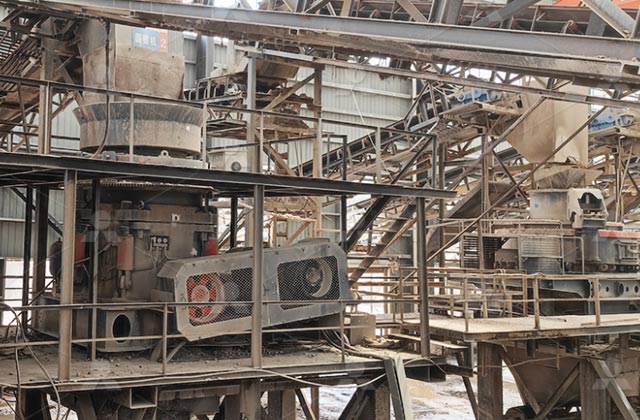River pebbles are naturally rounded stones found in riverbeds, composed mostly of quartz, feldspar, and other hard minerals. Due to their hardness and smoothness, processing river pebbles into useful construction aggregates requires a series of crushing stages. The crushing process is essential to break down large river pebbles into desired sizes for construction, road building, and other industrial uses.

1. Raw Material Feeding
The first stage starts with the feeding of raw river pebbles. Typically, the pebbles are extracted from riverbeds or quarries and transported to the crushing plant. Large-sized pebbles are fed into the crushing machine using a vibrating feeder, which regulates the flow and prevents clogging.
-
Equipment used: Vibrating feeder
-
Purpose: Evenly feed raw material to crusher; remove smaller unwanted particles
2. Primary Crushing
Once the pebbles enter the crusher, the primary crushing stage begins. This is where the largest stones are broken down into smaller, more manageable pieces. Jaw crushers are most commonly used for this stage because of their ability to handle large, hard rocks.
-
Equipment used: Jaw crusher
-
Purpose: Reduce large river pebbles to smaller sizes (typically 100-300mm)
3. Secondary Crushing
The crushed material from the primary crusher is then transferred to the secondary crusher for further size reduction. At this stage, cone crushers or impact crushers are usually employed to create smaller aggregate particles suitable for construction and road building.
-
Equipment used: Cone crusher or impact crusher
-
Purpose: Crush stones into smaller aggregates (usually 10-100mm)
4. Screening
After secondary crushing, the crushed pebbles are passed through vibrating screens. Screening separates the material into different size ranges based on the project requirements.
-
Equipment used: Vibrating screen
-
Purpose: Classify crushed pebbles by size; separate fine particles from coarse ones
5. Tertiary Crushing (Optional)
For certain applications requiring very fine materials, a tertiary crushing stage may be added. This stage further refines the pebbles to produce sand or very fine aggregates. Vertical shaft impact (VSI) crushers or fine impact crushers are ideal for this task.
-
Equipment used: VSI crusher or fine impact crusher
-
Purpose: Produce fine sand and smaller aggregates (under 10mm)
6. Washing
River pebbles often contain impurities such as clay, silt, and dust. Washing the crushed material improves the quality and appearance of the final product.
-
Equipment used: Sand washing machine or log washer
-
Purpose: Remove impurities; enhance product quality and surface finish
7. Final Screening and Grading
After washing, the pebbles undergo final screening to ensure uniform size distribution according to customer specifications.
-
Equipment used: Final vibrating screen or grading screen
-
Purpose: Final classification and grading of pebbles before shipment or use
Summary
| Stage | Equipment | Purpose |
|---|---|---|
| Raw Material Feeding | Vibrating feeder | Even feeding of raw pebbles |
| Primary Crushing | Jaw crusher | Break down large stones |
| Secondary Crushing | Cone or impact crusher | Reduce to smaller aggregates |
| Screening | Vibrating screen | Separate materials by size |
| Tertiary Crushing | VSI or fine impact crusher | Produce fine sand (optional) |
| Washing | Sand washing machine | Remove impurities |
| Final Screening | Vibrating screen | Grade and classify final product |
The river pebble crushing process is a multi-stage operation designed to maximize efficiency and product quality. Each stage plays a crucial role in turning raw, uneven pebbles into uniform, high-quality aggregates and sand suitable for various construction and decorative uses. Selecting the right equipment and optimizing each crushing stage can significantly impact the profitability and output of a river pebble processing plant.

